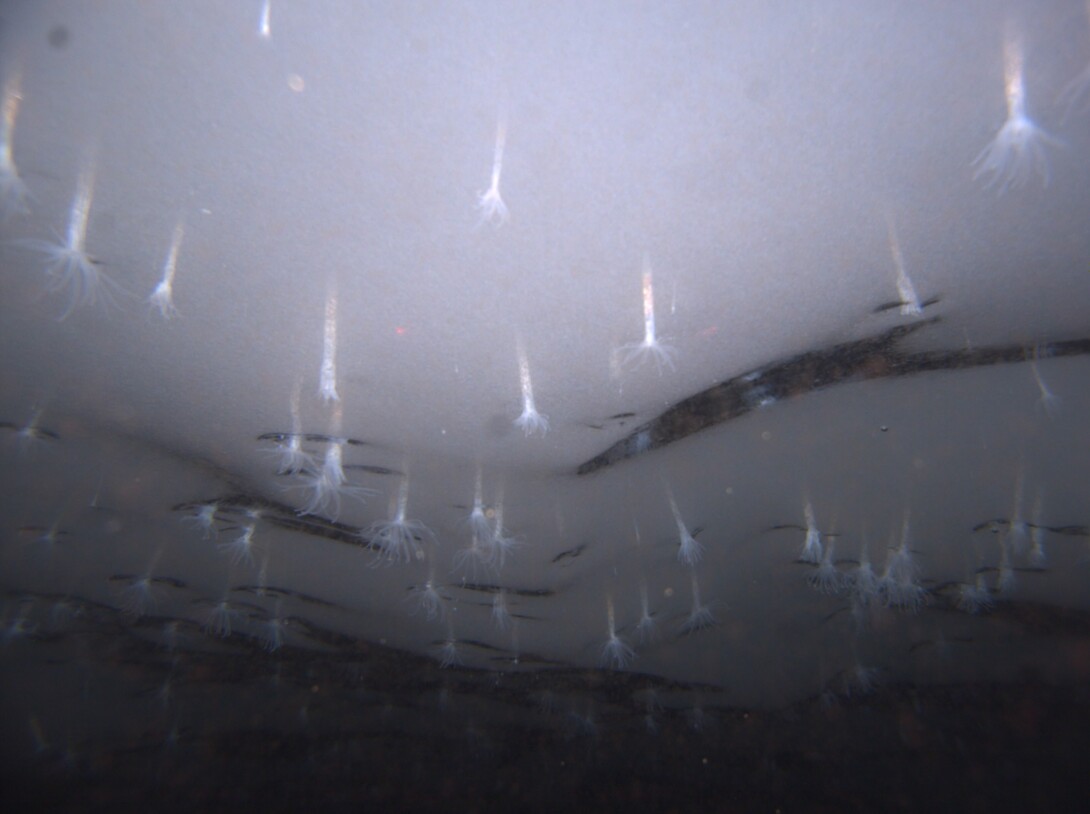
The new species of sea anemone found by geologists with the UNL-based ANDRILL program was named by the International Institute for Species Exploration among the top 10 species discovered last year.
The species, originally discovered in late December 2010 living on the underside of an ice shelf in Antarctica, was publicly identified for the first time in an article published last December in PLOS ONE, an open-access, peer-reviewed journal published by the Public Library of Science.
Though other sea anemones have been found in Antarctica, the newly discovered species is the first reported to live in ice. They also live upside down, hanging from the ice, compared to other sea anemones that live on or in the seafloor.
The white anemones were named Edwardsiella andrillae, in honor of ANDRILL (Antarctic Geologic Drilling), an international geological drilling program, partly funded by the National Science Foundation.
The new species was discovered using a camera-equipped robot to survey the area under the Ross Ice Shelf as part of a pilot project to determine the feasibility to drill into the seafloor below.
Images of the new species showed small sea anemones burrowed into the ice, their tentacles protruding into frigid water like flowers from a ceiling.
An international committee of taxonomists and related experts selected the top 10 from among the approximately 18,000 new species named during the previous year and released the list May 22 to coincide with the May 23 birthday of Carolus Linnaeus, an 18th century Swedish botanist who is considered the father of modern taxonomy.
In selecting Edwardsiella andrillae, the committee noted that its discovery “raises questions by its very existence. It is not clear how the species withstands the harsh conditions in its habitat.”
The top-10 list includes a quartet of tiny newcomers to science: a miniscule skeleton shrimp from Santa Catalina Island in California; a single-celled protist that does a credible imitation of a sponge; a clean room microbe that could be a hazard during space travel; and a teensy fringed fairyfly named Tinkerbell.
Also on the list are a gecko that fades into the background in its native Australia and a fungus that, conversely, blazed its way into contention by virtue of the bright orange color it displays when it’s produced in colonies.
Rounding out the list are the first carnivore mammal to be described from the Western Hemisphere in 35 years; a 12-meter-tall tree that has been hiding in plain sight; and Zospeum tholussum, a tiny, translucent Croatian snail from one of Earth’s deepest cave systems.
In 2007, a team of UNL entomologists headed by Brett Ratcliffe discovered one of the International Institute for Species Exploration’s top 10 new species, Megaceras briansaltini, a rhinoceros beetle found in Peru.







